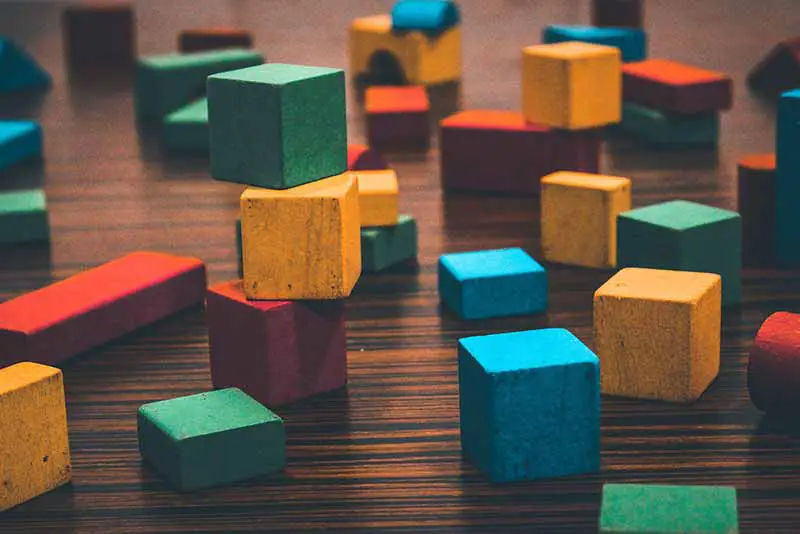Sensory Tools For The Classroom – Complete Guide
Children use their senses to experience the world. But, in childhood, they are not shaped up to digest the experiences well. They need to sharpen by using various tools. It flourishes the importance of sensory tools for the classroom.
They can learn many new things through that. Therefore, if you are a teacher, it is very important to have a clear idea of this. Then you can improve the performance of your children.
What is called a sensory activity? It can be identified as any activity that helps for the stimulation of the senses of children.
So, what are the sensory tools for the classroom that help your students? There are many tools like; wiggle cushions, T-stools, therapy balls, standing desks, etc. And it is very important to use them for children because; it will help improve their focus, participation, engagement, etc. And make sure to set goals, consider that all children are not the same, and do not try out any sensory strategy if you are unsure.
Accordingly, in this article, I have covered; how you can introduce sensory tools for your classroom, the importance of sensory tools used in the classroom, and the general considerations when using them.
Finally, I have provided some sensory tools that can be used in the classroom.
Let’s get started!
Table of Contents
How can you introduce sensory tools to your classroom?
Some teachers doubt introducing sensory tools for the classroom because; they think that the children will use them as another playing tool other than developing their skills.
Here, I will provide you with some tips to introduce them to your class effectively.
1. Introducing the sensory tools and talking about the way they work
First of all, you have to give a clear idea of the working process of the sensory tools for the students. Make sure to sharpen all the senses of the child through them.
So, please provide them with the tools that associate with all the senses and give them the chance to have hands-on experience with the tools.
2. Allow students to explore their unique sensory preferences
By this moment, the children have an idea about the tools and their working process. So, here, teach your children that everyone has unique sensory preferences and needs.
Show them that the senses make people unique and special when polished well. Share the enjoyable sensory experiences and discuss how this process improves the qualities such as; attentiveness, calmness, and alertness in the classroom.
3. List out the sensory tools
As soon as you discuss the preferences and the working process of the tools, list them according to the students’ preferences and needs.
Include the tools and strategies that work well for your children. And make sure to choose the things that help their learning process.
4. Involve the children in this work
When you get the help of your students for this work, it will help to come out with their creations, and also, they will feel responsible along with a sense of ownership.
So, please spare some time to work together with the children to make the necessary materials that they like to add to the list of sensory tools in the classroom.
There they will learn to use various materials and also get their help to organize, label, and store the prepared tools in the right place of the classroom.
5. Make a sensory kit contract
Here, you have to divide the materials you made into two as; the tools that are allowed to be used during the learning process and the things to be used during the break.
And also, tell students about the tools that they can use without your permission. Further, you can create rules for their use as;
- Distribute the responsibility of the materials to all the children and take care of them.
- Ask children to wait until the break to use the tools that can be used during the break.
- Raise hands and ask for the item that children need during the learning process.
- Please do not fight over the use of the tools and explain that they belong to everyone in the classroom.
The importance of sensory tools that are used in the classroom
Sensory tools for the classroom are important for sharpening the senses of children. As small children, they are still developing their sensory capacities.
Therefore, this is significant for them to gain new experiences. So, here, let’s discuss the importance of this in more detail.
1. The development of cognitive skills
This is one of the major benefits of using sensory tools in the classroom because the children can interact with various items that help them in many ways like; counting, organizing, matching, and labeling objects.
You can see how they engage cognitively in them by giving various tasks. They also will enjoy the learning activity with these items.
2. The children develop socially and emotionally
Children will learn to cooperatively use the sensory tools in the classroom, which will develop their social as well as attitudinal skills.
They also get the chance to express their opinions while discussing the tools and creating them according to their needs and preferences.
3. Development of the fine motor skills
Motor skills are known as the predetermined actions associated with the movements of small muscles of the hands.
When children use their hands, they interact with various objects; they automatically develop their fine motor skills.
4. Giving children a sense of balance and body awareness
Children always love to learn new things that happen around them. Almost all the sensory tools focus on the five senses; touch, taste, smell, hearing, and sight.
They are very important for balance and body awareness.
5. Promote the concentration of children
Sensory tools are the best to promote the focus and concentration of children, especially for those who are struggling to be attentive to their studies.
Various tools have been specially created for them. Fidget tools and liquid timers are included here.
What are the general considerations when using sensory tools?
As teachers, you should consider many things when introducing sensory tools to the classroom.
If you haven’t a clear idea about it, negative results may occur instead of getting positive outcomes. So, here I will help you to do it effectively.
1. Keep a goal
You can’t just think and try any sensory tool with your children. First of all, you should have an exact target or a goal. You can write down a list of goals that you are going to achieve through the materials you provide for the students.
Identify whether the specific objects can reach the targets effectively. For example, suppose you want to improve the concentration of children or develop their fine motor skills.
In that case, you should try out the tools that can reach the above goals and monitor the children whether they reach the target you expected by using the tools provided.
And do not allow them to use the materials only as a play tool. Fun and enjoyment should be an additional gain of it, not the only gain.
2. Do not think that all children are the same
This is very important when providing sensory materials for the children. All children are not the same; they have different capabilities and preferences.
So, you have to understand their unique needs and preferences by discussing them before providing the tools.
As an example, the tool that suits one child may not work with another. You must identify those different needs and help them to polish their unique capabilities through this.
3. Do not try any sensory tool if you are unsure about it
This is not just a playful activity. It directly links with the academic and social development of children. Therefore, you also can’t treat it normally.
If you are not clear about the tool and its process, do not try it without the help of any professional.
It would help if you mentioned the goals you want to reach and the individual needs and preferences of children to that person. If not, it will result in more negative effects than getting positives.
Sensory tools that you can use in the classroom
If you are looking for some sensory tools for the classroom, I will help you with that. There are various types of such materials.
You have to choose the best thing according to the targets and the preferences of the children. Here, I will provide you with some of those best objects.
1. Alternative seats
The children want any movement of about 4-5 hours per day which will help them develop the sensory needs of their central nervous system.
It won’t be easy with the time they spend at the school. So, an alternative or a flexible seating option is very important for them. Using different seating options can move their bodies; engage the proprioceptive and vestibular systems.
So, you can try; standing desks, wiggle cushions, T-stools, floor seating in bean bag chairs, and therapy balls.
2. Tactile input
Children can learn effectively when they can touch, participate and feel things. So, you can increase their attention and interest by using the tactile sensory system in the classroom.
Accordingly, you can engage the student well by doing experiments in science; engage them in counting under Mathematics by using various coins or seeds.
Also, remember that some students are touching and feeling all the things constantly. So, you can provide them with a tactile sensory board or a tactile hand fidget. It will be beneficial for them.
3. Auditory input
Children are encouraged for the classroom activities through the transitions made by the familiar rhymes and routine songs.
It also helps them to learn new things, and they become aware of the time to begin and end a specific activity. Using familiar songs will be effective here, but make sure not to overstimulate the children.
And eliminate the background noises to increase their attentiveness and focus. If not, they will struggle to focus both on the activity and the song.
Here, noise-canceling headphones will be one of the best means to help students struggling with this. It will prevent their ear from reaching unnecessary sounds.
4. Visual input
Here, children learn through sight or the visual system. This is beneficial for the students who have difficulties with attending and focusing, especially in front of the busy decorations of the classroom.
So, it is better to create a natural, calm, and quiet environment in the classroom.
Slant boards are considered one of the best sensory tools here. They help to bring the written papers more upright and closer to the midline visual field.
Also, they will help decrease the distress of the eyes, help with handwriting, help the students who have visual deficits, low muscle tone, and prevent them from being lazy.
Further, the students with resistant handwriting can take advantage of this. You can make the slant boards yourself by using a 4 inch 3-ring binder, large slip, and some Velcro adhesive.
Also, please pay your attention to the visual timers because they also can be beneficial in the classroom through helping to easily transit to and from activities or centers, increasing the productivity of children, decreasing the constant verbal prompting need of the students, and helping to develop the positive classroom regulation and behaviors of them.
5. Sensory deprivation corner
Sometimes you can see that many classrooms are so busy and noisy. So, an artificial calming corner is helpful for the students to eliminate the noise and the disturbance and be relaxed.
T-pee, noise-canceling headphones, etc., are good ideas for the calming corners. Also, you can keep tactile boards or visual calm-down jars in this corner.
And make sure not to put visual stimuli on the walls.
6. Movement
Do not forget to incorporate movement in the classroom. Use movement before going to any seated activity or work.
It will make children more attentive. It is the best tool to improve their learning skills and their attention.
7. Heavy works
Heavy works like; lifting and pushing heavy boxes, books, or chairs, erasing dry-erase boards as well as door holding, etc., can offer organising capabilities for children with a calm mind.
Conclusion – Sensory tools for the classroom
We have discussed sensory tools for the classroom with more details. I think this article will work out for all the teachers as I have covered many important areas like; how can you introduce sensory tools for the classroom, the importance of sensory tools that are used in the classroom, what are the general considerations when using them, and finally, I have provided some sensory tools that can be used in the classroom.
Most of the teachers use sensory tools to improve various skills of children like; the development of cognitive skills, development of fine motor skills, etc. But many teachers are doubtful about introducing them.
You can successfully do it by following the steps: introducing the sensory tools and talking about the way they work, allowing the students to explore their unique sensory preferences, listing out the sensory tools, involving the children in those works, and making a sensory kit contract.
It would help if you also considered some of the general considerations here. They are; keep a goal, do not think that all children are the same, and do not try any sensory tool if you are unsure about it. Here, you can use sensory tools like; alternative seats, tactile input, auditory input, visual input, etc., to improve the skills of children you expected.
Thank you for reading this post. Stay tuned with Edu Nursery for more valuable content.







